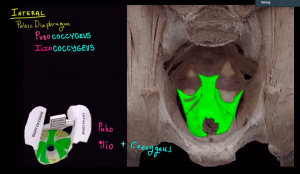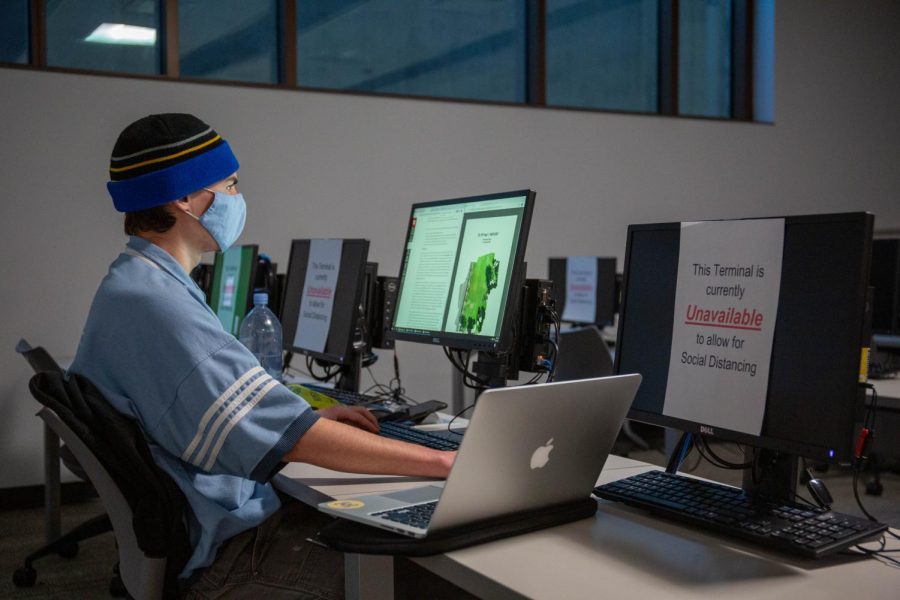U Anatomy Lab Sees Positive Effects of Moving Online
Fourth-year student, Thomas Stone, works on a GIS project at a computer lab in Gardener Commons on October 30, 2020. (Photo by Gwen Christopherson | The Daily Utah Chronicle)
November 6, 2020
Mark Nielsen, a professor at the University of Utah’s biology department, has taught Human Anatomy for 35 years, and as part of the course, students typically participate in a lab that consists of an undergraduate teacher’s assistant leading six or seven students in a smaller group session where they can see and touch cadavers, but such a lab is impossible with COVID-19 restrictions.
“It’s just this situation we’re in, but it’s frustrating to us. And also, it’s sad to me that the students just don’t get that wonderful opportunity of seeing the cadaver and seeing the body, the real thing,” Nielsen said.
This semester, Nielsen’s TAs are running labs online with approximately 40 students. Although the switch from in-person labs to online means that students miss out on the tactile experiences, it also comes with some advantages, according to the TAs.
Steven Swenson, a newly graduated kinesiology major and one of Nielsen’s TAs, has found there are some aspects of teaching the lab online that they weren’t able to do in-person.
“People have talked a lot about the disadvantages to having this online format, and those are totally legitimate,” Swenson said. “And in the same token, we can do things with our presentations… like actually bring it to life a little bit with animation… things that we can’t really do in lab.“

As well as being able to better demonstrate different parts of the human anatomy, Hiroshi Aoki, a senior studying biology and psychology and another TA in the class, found that the online format has provided benefits to introverted students or students who dislike big group settings.
“Those students excel really well, as well as those who maybe thrive a little bit more by themselves, or online, and I do see that and I promote that and really enjoy that portion of the lab,” Aoki said.
Another of Nielsen’s TAs, Anna Tidwell, a senior studying biology, said that it’s easier to involve students in the online format as opposed to the in-person labs.
“In–person there’s always at least half the group that’s never going to say anything to you, or they’re just kind of hanging out watching,” Tidwell said. ‘This way, people can interact in the chat, they don’t have to speak out loud, so it gives opportunities for more interaction.”
According to Tidwell, it’s also easier for the whole group of students to see small images or structures online.
“It gives them a different opportunity. Although it’s not the same and there’s disadvantages to it, I think it’s a good way for students to still get involved, and I still think they’re getting a good education from this method as well,” Tidwell said.
Scott King, a junior studying anatomy and physiology and another TA, has noticed an increase in communication from students this semester as compared to past semesters.
“Historically, it was pretty rare to have a student reach out to me via email. It was also pretty rare for somebody to show up to my office hours,” King said. “My office hours are pretty crowded now because they’re on Zoom. I get emails all the time, so I think as far as the communication between instructors and students, that has been improved in several ways. I feel like maybe I’m just a little more accessible than I used to be.”
Nielsen hopes that in the future, he can keep some of these advantages once in-person labs are possible again.
“[The TAs] are finding some things that are beneficial. There’s things that are kind of sad about it, that the students can’t be there and get hands–on interaction,” Nielsen said. “But on the other hand, we’re seeing some positives.”









